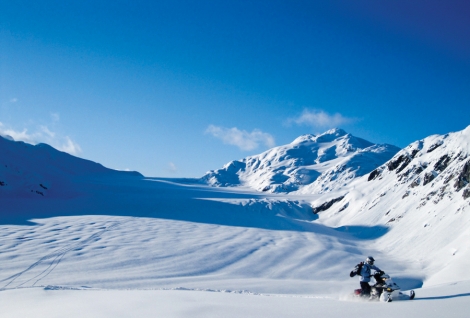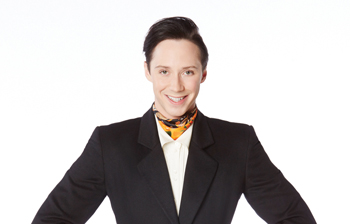A filmmaker heads out in search of the white stuff
Joe Carlino, one of the premier snowboarding filmmakers in the business, grew up in North Salem, a town whose nearest answer to a mountain is a mysterious 60-ton boulder residents call Balanced Rock.
In the American Northeast, snow sports are seasonal activities usually undertaken by so-called “weekend warriors.” In this area of the country, the mountains are short and stout, the snow sporadic and the hills often covered more by ice than snow.
Carlino’s parents, Maria and Sal, taught him to ski when he was 3 years old and after years of bangs and bruises from attempting jumps and stunts, he switched to snowboarding at age 17. Carlino had a near-religious experience as a teenager the first time he visited Colorado, with its marathon slopes and endless snow. He dreamt of moving there, like a snowboarding frontiersman seeking better conditions.
“It’s like the gold miners going out west: They have the dream about finding gold. We have that dream about riding powder,” he says. “You move out west to the real mountains, to the real snow, to the real powder.”
Carlino graduated North Salem High School and lasted about a week as a student at Westchester Community College in Valhalla before he decided he wanted a more “hands-on” education. He took some money he had put aside for his higher education and instead used it to buy his first video camera, a computer and film-editing software. Then he headed to California to make it in the industry. He even appreciated what the natives there viewed as off-days on the slopes.
“I remember so many times once I went out to California, people would say ‘Man, it’s icy today,’” he says. “And I remember telling people, ‘You guys don’t know what ice is, this is soft.’”
When he first headed west, Carlino found that Bear Mountain in Big Bear Lake, Calif., was looking for a videographer.
“After a month or two of annoying the marketing manager there, he gave me a job,” he says.
Carlino ended up shooting video for Transworld Snowboarding, one of the largest magazines of its kind in the world. After a stint that lasted from about 2006 until 2010, Carlino freelanced for a year, then entered the next stratosphere when he was hired by Nike Snowboarding in 2012. With Nike’s big name – and big wallet – Carlino and other scene insiders have been taking to a wider audience.
Carlino recently worked on Nike’s “Never Not” films. Part 1 was a more “Inside Baseball”-style video with recognizable names in the industry and strong song selection, aimed at an audience already well-versed in the nuances of the stunt snowboarding game. Part 2 of “Never Not” was aimed at a more mainstream audience, filmed in a more standard documentary style. It was submitted to film festivals and Carlino’s hope is that it will strike a chord with people that were like him as a teenager.
“Hopefully, it inspires them to snowboard or be involved in the culture,” he said. “Then you think about it when you wake up, and you think about it when you go the bed.”
One benefit of being a filmmaker working for a large brand is that Carlino has been able to focus on his craft without worrying about the same things filmmakers in other genres might. There’s an oversaturation of DIY snowboarding films and loads of free content on the Internet with filmmakers, like those in many other industries, rethinking their business models as sales decline.
“Working for a brand, it doesn’t matter if the movie doesn’t sell a million copies so long as people see it and it has a million views,” he said.
Still, getting those views is a challenge and shooting snowboarding video is more than just pointing and shooting. A large portion of the challenge is just getting to a backcountry location, like a recent shoot in Alaska. A snowmobile or helicopter is needed just to get you there, dangling sometimes feet away from a 3,000-foot cliff. Temperatures are cold, as cold as 30 degrees below freezing; lights can fall over during a critical stunt; cameras might get damaged from snow; and after it’s all done, the filmmaker has to be able to snowboard down the same slopes as his subjects.
Carlino has witnessed a snowmobile getting stuck and later having to be pulled out of the snow using a helicopter. He’s seen a snowboarder break his leg in the middle of the blank canvas of a remote mountain slope where cellphone service is only available through satellite and avalanches are possible, even if unlikely. And of course, there’s the possibility of a freak storm.
“It turns into survival just to get out before you get whited out,” he said.
His biggest fear though as he gets older is not the potential danger or not being able to keep up as his subjects get younger, but that he might get bored. So far he has no plans to branch out beyond snowboarding.
“A lot of people ask me ‘You going to do music videos or commercials?’ and I’m like I don’t know,” he said. “I’m worried about that one day that I’m just not excited about what the riders are doing, but it hasn’t happened yet.”



